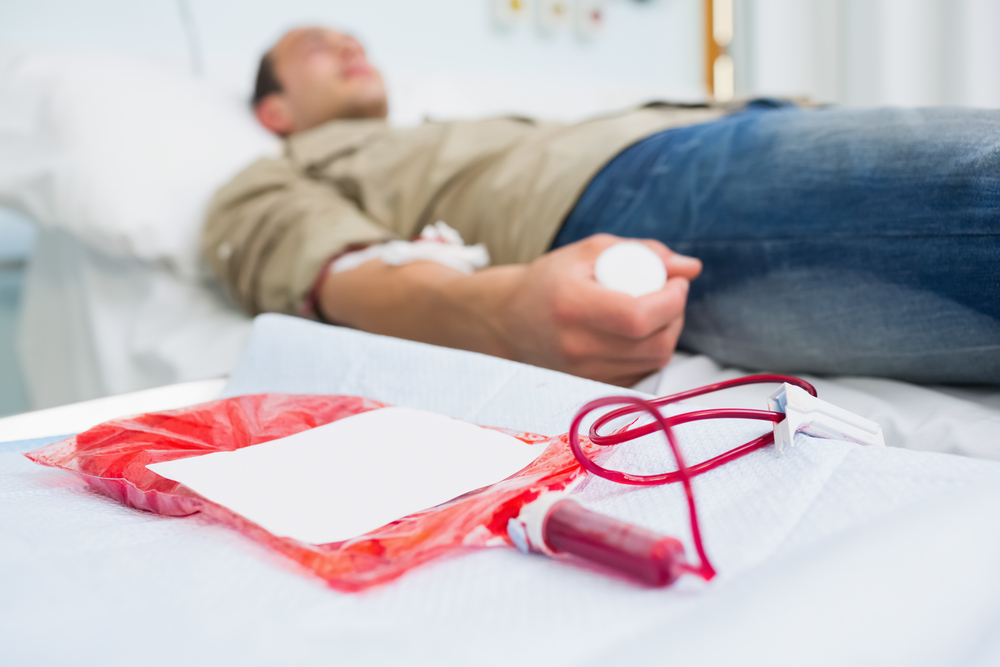Undiagnosed AIHA Patients May Be Given Wrong Blood Type During Transfusions, With Life-threatening Consequences, Case Study Says
Written by |

The wrong blood type may be given to people with undiagnosed autoimmune hemolytic anemia (AIHA), which can lead to them receiving blood transfusions from mismatched blood donors, a case report shows.
This research highlights the need for rigorous lab work to determine and confirm blood type before blood transfusions are given to these patients.
The study, titled “Masquerading of mismatched blood transfusion by underlying autoimmune hemolytic anemia,” was published in the Asian Journal of Transfusion Science.
AIHA is an autoimmune disease characterized by the production of autoantibodies that attack and destroy red blood cells, a process known as hemolysis.
The disease includes two main variants — cold agglutinin disease (CAD) and warm autoimmune hemolytic anemia (wAIHA) — depending on whether autoantibodies bind to red blood cells more easily at lower or higher temperatures. Mixed autoimmune hemolytic anemia (MAIHA) is a type of AIHA defined by the presence of both warm and cold autoantibodies.
Blood transfusions are used to treat more severe cases of AIHA where patients developed life-threatening anemia, but they can be challenging.
In this study, researchers report the case of a 15-year-old girl who was undiagnosed for AIHA when she was given a wrong match of red blood cell transfusions, which subsequently caused hemolysis.
The young girl was admitted to the emergency room with fever, chills, respiratory distress, and brown urine. She had been given three packs of blood cells from an AB+ donor at a local hospital.
On clinical evaluation, she was pale, with jaundice (yellowing of the skin or whites of the eyes) and low blood pressure. Additional symptoms included dehydration, restlessness, and difficulty in breathing.
Lab tests revealed low hemoglobin levels (3.8 g/dL, while the normal range is from 11.5–13.5 g/dL), reticulocytosis (increase in reticulocytes, which are an immature form of red blood cells), high levels of bilirubin (hyperbilirubinemia), and elevated lactate dehydrogenase (LDH) — all signs of red blood cell destruction.
Blood smear analysis showed red blood cells clumped together. After further lab tests, the patient was diagnosed with MAIHA.
After “cleaning” her blood of autoantibodies, doctors were able to pinpoint her blood type as A+. She was given blood transfusions, three units in total, of the “best match” donor, while under close observation. She was also given steroids.
No adverse effects arose from the transfusion this time. The toxic metabolites that accumulated after the first round of mismatched blood transfusions were progressively eliminated in the urine.
Within four days of treatment, her hemoglobin levels rose to 10.3 g/dL and her other symptoms lessened. After a drop of hemoglobin levels to 5.2 g/dL on day five, she received another three units of “best match” donor blood, along with rituximab (marketed as Rituxan by Genentech).
Her hemoglobin levels remained stable, and lab tests showed reduced red blood cell destruction.
When she was discharged from the hospital, her hemoglobin levels were stable at 12.5 g/dL, and she had normal levels of bilirubin and LDH.
Overall, this case report highlights the need “of communication with blood bank personnel about underlying AIHA while performing blood grouping for transfusion,” the study stated.
“Life-threatening complications of mismatched blood transfusion are rare but can occur,” the researchers said.




